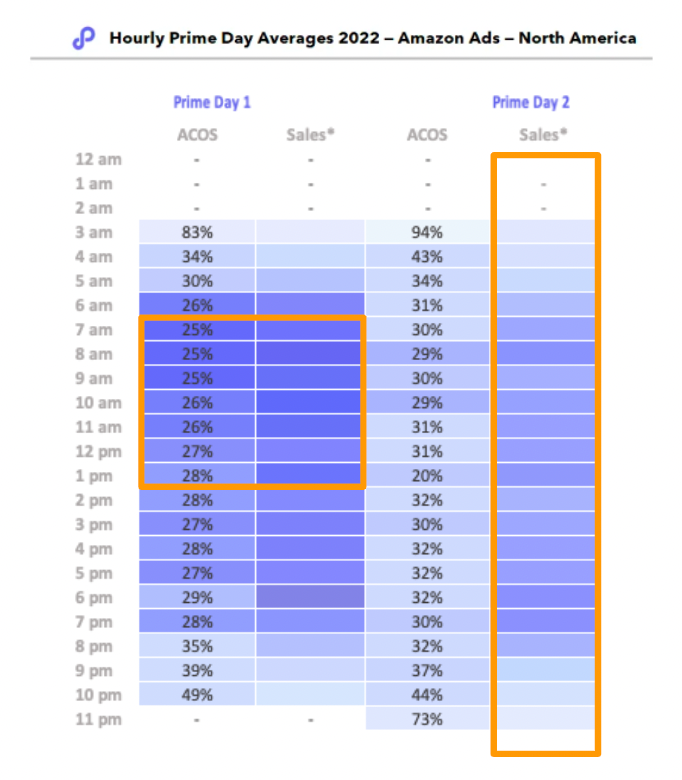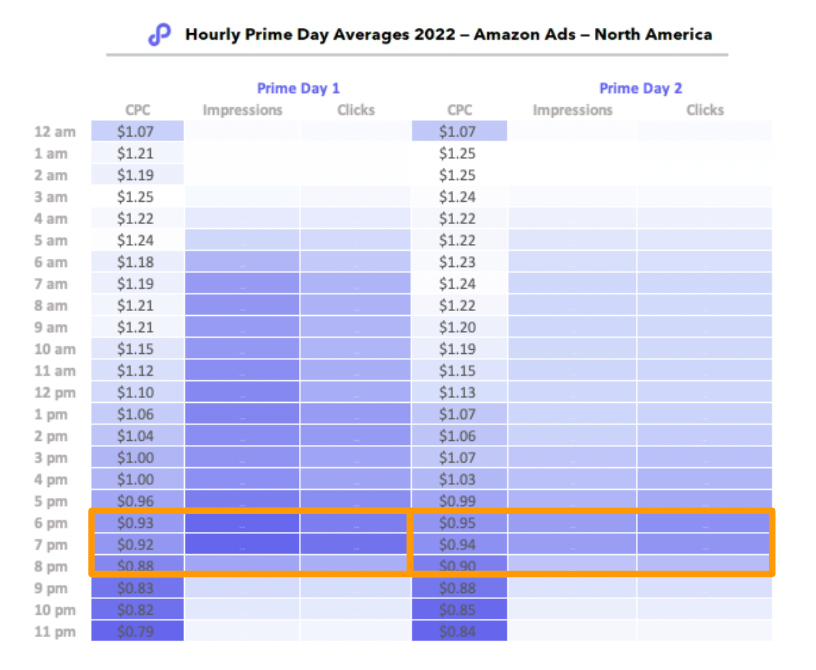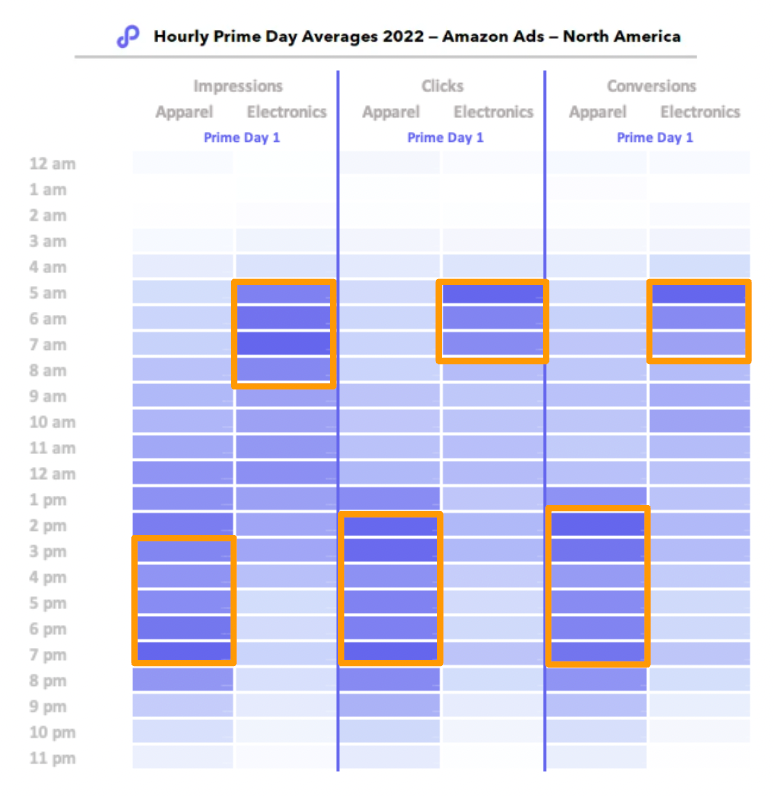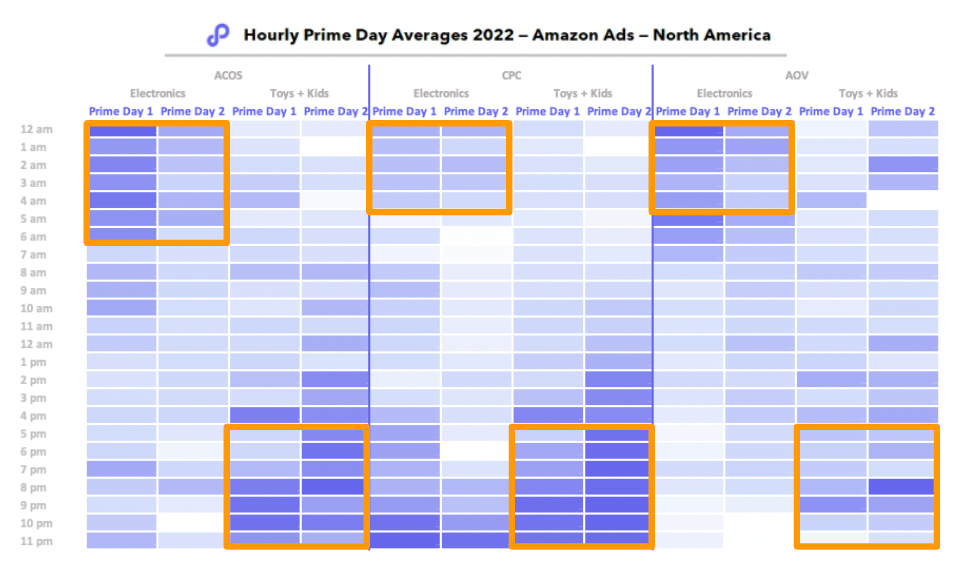
Leverage Amazon Marketing Stream to unlock incremental growth during Prime Day
Cindy Li, June 28, 2023
It’s official, Amazon Prime Day 2023 is July 11th and 12th. And you might be asking “How should I or my clients allocate incremental budget during Prime Day?” or want to know “Is increasing advertising spend during Prime Day worth the investment?”
To help you decide what the right answer is, we analyzed data from Prime Day 2022 to help offer some insight. Here is what the data says.
Advertisers always know ad competition is fierce during Prime Day. And last year was no exception, with our analysis showing that CPCs on Amazon US increased by 53%, compared to trailing 30-day daily averages.

To qualify the impact of an incremental budget during Prime Day, we compared Ordered Revenue between two cohorts of clients with distinct spend behaviors:
Cohort 1: Those who boosted daily spend by > 50% during Prime Day;
Cohort 2: Those who merely maintained spend during Prime Day
There is a stark difference between the two cohorts: Cohort I saw 130-183% lift in average Ordered Revenue, whereas Cohort II only saw 7-24% Ordered Revenue increase.
We observed a similar trend across EU5.

CPCs increased by 144% during Prime Day, compared to trailing 30-day daily averages. Cohort 1 saw 183-250% lift in average Ordered Revenue, and Cohort 2 saw -2%-34% increases. In fact, some clients in cohort 2 retracted.
Based on these data points, we can definitively say - Increasing ads spend during Prime Day is worth the investment. But, how do we effectively and efficiently spend the incremental budget during Prime Day?
In our view, Amazon Marketing Stream is one of the most powerful tools at advertisers’ disposal and should be incorporated into your Prime Day strategy to maximize the impact of your incremental budget.
Here are a few ways that you can leverage Amazon Marketing Stream for Prime Day 2023 planning.
Amazon Marketing Stream reveals hourly shopping behavior insights that enable data-informed strategy
Last Prime Day, Day 1 had both the strongest sales efficiency and volume. Attributed sales volume peaked during 7 am to 1 pm PST. Day 2, however, saw softened sales and decreased efficiency. In addition, ACOS and sales levels were much more spread out across various hours rather than within a consecutive period.
This suggests that most shoppers had already planned Prime Day purchases ahead of the event, and were quick to grab their sought-after deals on Day 1 morning.
Based on this insight, we recommend distributing your budget appropriately over two days. Perhaps, allocating more towards Day 1 as this has historically turned the biggest profits.

Note: for ACOS - the darker the color, the higher efficiency; for Sales - the darker the color, the higher the sales.
Now let’s look at the trends of CPC, Impressions and Clicks.

Note: the darker the color, the lower the CPC.
As expected, the most expensive clicks were concentrated in the morning hours for both days. Surprisingly, impressions and clicks peaked much later on both days, roughly around 5pm - 7pm PST, which also had a relatively low CPC of $0.93 (70% of the highest hourly CPC during Prime Day).
Though some shoppers might be quick to grab their sought-after deals on Day 1 morning, the overall consumer shopping intent remained high during the afterwork hours. Combined with lower CPCs, advertisers who continued to invest budget into the evenings were able to capture eyeballs and sales efficiently.
Another piece to call out is that categories that tend to have a longer consideration window should continue running ads until later in the day to stay top of mind when consumers are ready to convert.
This is precisely why the Amazon Marketing Stream is so critical to your advertising strategy. It takes the guesswork out by displaying performance metrics as granularly as by the hour so that you can make intelligent decisions about when to allocate advertising budget to achieve the biggest impact.
Amazon Marketing Stream data uncovers category-level consumer behavior differences
Earlier we discussed the overall trends across all product categories. We always had a hypothesis that consumer behaviors differ across categories even during Prime Day. To test the hypothesis, we picked three categories, Apparel, Electronics and Toy/Kids to do a closer examination.

Apparel and Electronics displayed opposing trends in terms of Impressions, Clicks and Conversations. Peak Impressions, Clicks and Conversions occurred between 3pm and 7pm PST for the Apparel category while these same metrics peaked between 5am and 8am PST for the Electronics Category.
Electronics tends to be the first category that consumers search for on Prime Day. This suggests online customers might mirror their behaviors with brick and mortar, starting their shopping at the earliest opportunity to get great deals on pricier products. Advertisers operating in categories with resembling characteristics should scale up bids to ensure a strong presence early in the day.
Next, we compared ACOS, CPC and AOV between Electronics and Toy/Kids.

Electronics saw the highest efficiency between 12am - 6am PST while the lowest ACOS for Toy/Kids category occurred during 5pm - 11pm PST.
In addition to investing during high traffic hours, advertisers should also capitalize on time of the day with high advertising efficiency to put your budget to optimal use. Investing in hours with high AOV can be an effective strategy, provided that there is a balance between traffic and CPC. For example, in the case of the Electronics category, though 12am - 5am PST had the highest AOV, it also had the lowest impressions. Despite the low impressions, the low CPC during that time balanced things out and brought in efficiencies.
With categories performing so differently throughout hours of the day across Prime Day, it’s critical to look at Amazon Marketing Stream data to reveal when your target consumers tend to search, click and convert.
Lastly, we want to leave you with some recommendations.
In terms of budget allocation, the lead-up and lead-out periods are just as important as Prime Day itself
Ramping up spend a few days prior to Prime Day will help enhance relevancy
Maintain spend a day after as we observed that CPCs tapered off roughly 24 hours after Prime Day
During Prime Day, shoppers started to use ‘prime’ in their search queries to find deals on Amazon faster
We noticed that search queries containing “prime” saw an average gain in Search Frequency Rank of +65,000 vs the prior week
If you have deal ASINs, consider bidding on relevant ‘Prime Day’ terms
Overlay Amazon Marketing Stream data with Share-of-Voice data for a holistic strategy
Branded Share-of-Voice is most important to maintain when the majority of branded searches are happening.
Ensure bids are competitive on priority terms during high impression hours so that your product show up above the fold when searches happen
Happy Prime Day!
To get started or learn more about how Perpetua can help you scale your Amazon Advertising business, contact us at hello@perpetua.io